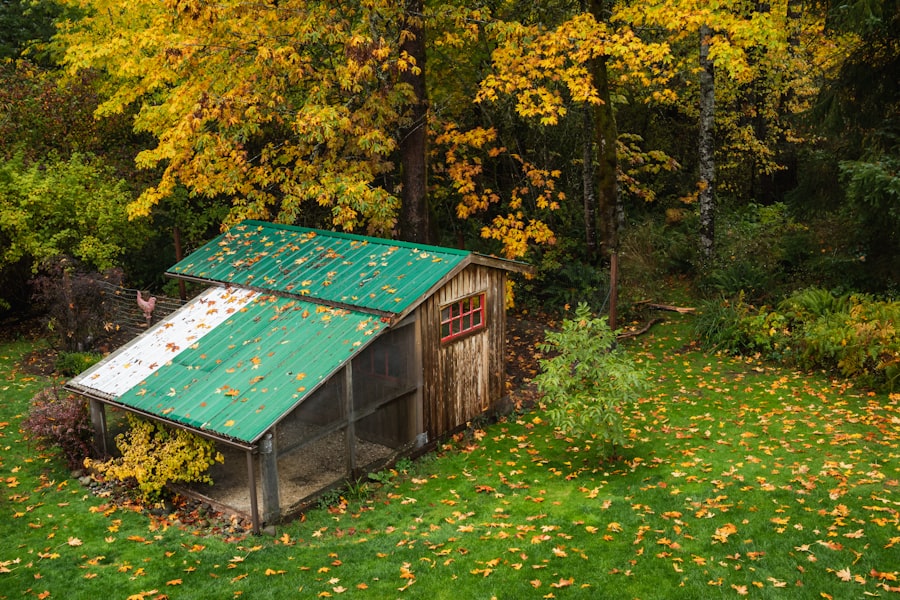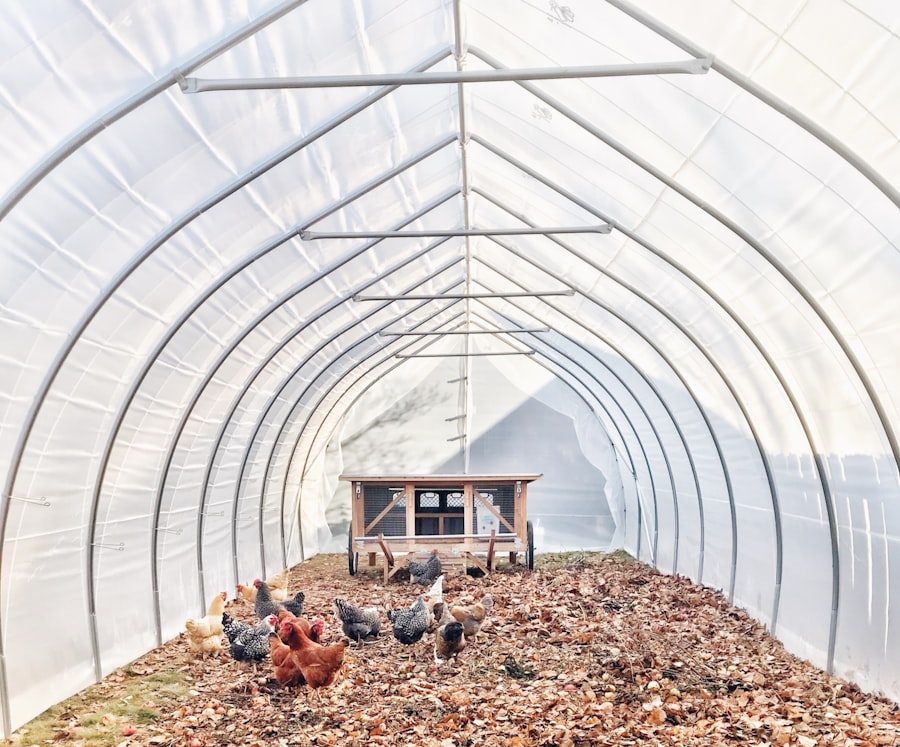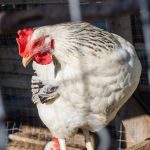When establishing a chicken farm, the initial investment is a critical consideration. The setup costs can vary significantly based on the operation’s scale and available resources. Land acquisition is a major expense, providing the necessary environment for chicken rearing.
Infrastructure costs, including chicken coops, feeding and watering systems, and storage facilities, also contribute substantially to the initial investment, particularly for large-scale operations. Equipment purchases represent another significant expense. Essential items include egg incubators, brooders, and heating systems, which are crucial for maintaining chicken health and productivity.
Additional costs may include vehicles for transporting feed and supplies, as well as machinery for processing eggs and poultry products. Careful budgeting and planning are essential to account for all necessary expenses and avoid underestimating the required initial investment. Human resources are also a vital component of the initial investment.
Hiring skilled labor for animal care, maintenance, and administration is necessary for efficient farm operation. The costs associated with employee wages, benefits, recruitment, and training should be factored into the budget. Both direct and indirect costs related to staffing must be considered.
While the initial investment for starting a chicken farm can be substantial, thorough planning and budgeting can lead to the establishment of a successful and profitable operation.
Table of Contents
- 1 Housing and Equipment
- 2 Chickens
- 3 Feed and Supplies
- 4 Veterinary Care
- 5 Permits and Regulations
- 6 Unexpected Costs
- 7 FAQs
- 7.1 What are the initial costs of starting to keep chickens?
- 7.2 How much does a chicken coop cost?
- 7.3 What are the ongoing costs of keeping chickens?
- 7.4 How much does chicken feed cost?
- 7.5 Are there any unexpected costs associated with keeping chickens?
- 7.6 Are there any cost-saving measures for keeping chickens?
Key Takeaways
- Initial investment in starting a chicken farm includes costs for land, infrastructure, and initial stock of chickens.
- Housing and equipment expenses involve building coops, nesting boxes, feeders, and waterers for the chickens.
- When it comes to chickens, the costs include purchasing the birds, vaccinations, and any necessary breeding equipment.
- Feed and supplies are ongoing expenses that include purchasing feed, bedding, and other supplies for the chickens.
- Veterinary care costs should be factored in for regular check-ups, vaccinations, and potential medical treatments for the chickens.
- Permits and regulations may require fees for licenses, inspections, and compliance with local laws and regulations.
- Unexpected costs can arise from unforeseen circumstances such as disease outbreaks, equipment repairs, or natural disasters.
Housing and Equipment
Designing the Ideal Chicken Coop
The design and construction of chicken coops are critical for providing a safe and comfortable environment for the birds. The coops should be well-ventilated, insulated, and equipped with proper lighting to ensure optimal conditions for egg production and growth. Additionally, the coops should be designed to provide easy access for cleaning, feeding, and monitoring the chickens’ health.
Essential Equipment for a Chicken Farm
In addition to housing, the equipment required for a chicken farm includes feeding and watering systems, egg collection and processing machinery, and storage facilities for feed and supplies. The feeding and watering systems should be designed to provide easy access to clean water and balanced feed for the chickens. Proper storage facilities are essential for maintaining the quality of feed and supplies, as well as for managing inventory efficiently.
Regulating Temperature and Air Quality
Heating and ventilation systems are essential for regulating temperature and air quality within the chicken coops. These systems are particularly important in regions with extreme weather conditions, as they help to protect the chickens from heat stress or cold exposure. Additionally, investing in backup power generators can help to ensure that essential equipment continues to function during power outages.
Investing in Quality Equipment for Long-term Success
Investing in high-quality equipment is crucial for ensuring the long-term success of a chicken farm. Overall, housing and equipment are critical components of a successful chicken farm, and careful consideration should be given to their design, construction, and maintenance.
Chickens

The selection and management of chickens are fundamental aspects of running a successful chicken farm. When starting a chicken farm, it’s important to carefully consider the breed of chickens that will be raised. Different breeds have unique characteristics that make them suitable for specific purposes such as egg production, meat production, or dual-purpose.
Factors such as climate, available resources, and market demand should be taken into account when choosing the breed of chickens. Once the breed has been selected, proper management practices are essential for ensuring the health and productivity of the chickens. This includes providing appropriate nutrition, monitoring their health, and implementing biosecurity measures to prevent disease outbreaks.
Additionally, it’s important to consider factors such as stocking density, lighting schedules, and environmental enrichment to promote the welfare of the chickens. Furthermore, managing the reproductive cycle of chickens is crucial for maintaining a sustainable supply of eggs or meat. This involves providing suitable conditions for egg laying, incubating eggs when necessary, and managing brooding and rearing of chicks.
Proper management of chickens is essential for maximizing their potential for egg production or meat yield while ensuring their welfare and well-being.
Feed and Supplies
Feed and supplies are essential components of running a successful chicken farm. The nutritional requirements of chickens vary depending on factors such as age, breed, and purpose (e.g., egg production or meat production). It’s important to provide a balanced diet that meets the specific nutritional needs of the chickens to ensure their health and productivity.
This may involve purchasing commercial feed or formulating custom feed rations based on the specific requirements of the chickens. In addition to feed, there are other supplies required for running a chicken farm such as bedding materials, nesting boxes, egg cartons, cleaning supplies, and protective gear for handling chickens. It’s important to ensure a steady supply of these essential items to maintain proper hygiene and animal welfare standards on the farm.
Additionally, investing in quality supplies can help to improve efficiency and reduce waste in the operation. Furthermore, managing inventory and sourcing suppliers are important aspects of ensuring a reliable and cost-effective supply of feed and supplies. Establishing relationships with reputable suppliers can help to ensure consistent quality and timely delivery of essential items.
It’s also important to monitor market trends and prices to make informed decisions about purchasing feed and supplies. Overall, feed and supplies are critical components of running a successful chicken farm, and careful consideration should be given to their selection, management, and procurement.
Veterinary Care
Veterinary care is an essential aspect of maintaining the health and welfare of chickens on a farm. Regular veterinary check-ups, vaccinations, and disease prevention measures are crucial for preventing illness outbreaks and ensuring the overall well-being of the flock. It’s important to establish a relationship with a qualified poultry veterinarian who can provide expert advice on disease prevention, treatment options, and biosecurity measures.
In addition to routine veterinary care, it’s important to have a plan in place for responding to emergencies such as disease outbreaks or injuries. This may involve having access to emergency veterinary services or developing protocols for quarantine and treatment of sick or injured chickens. Investing in proper veterinary care is essential for protecting the investment in the flock and ensuring a sustainable supply of eggs or meat.
Furthermore, maintaining detailed health records for the flock is important for tracking vaccination schedules, disease history, and treatment outcomes. This information can help to identify trends or patterns in health issues and inform decision-making about disease prevention strategies. Additionally, staying informed about current best practices in poultry health management can help to improve the overall health and productivity of the flock.
Permits and Regulations

Zoning and Land Use Regulations
To ensure compliance with legal requirements, it is essential to research local laws and regulations that apply to poultry farming. This may involve obtaining permits for land use, building construction, waste management, water usage, or other aspects of farm operation.
Animal Welfare Standards
In addition to zoning regulations, there may be regulations related to animal welfare standards that must be met to operate a chicken farm legally. This may include requirements for housing conditions, stocking density limits, access to outdoor areas, or other aspects of animal care. Understanding these regulations is crucial for maintaining ethical farming practices.
Food Safety and Business Licensing
Food safety regulations may apply to aspects such as egg handling, processing facilities, labeling requirements, or transportation of poultry products. Compliance with these regulations is vital for ensuring that products meet quality standards and are safe for consumption by consumers. Furthermore, obtaining business licenses and permits is necessary for legally operating a poultry farm as a business entity.
Unexpected Costs
Running a chicken farm involves various unexpected costs that may arise due to factors such as weather events, disease outbreaks, equipment failure, or market fluctuations. It’s important to have contingency plans in place for managing unexpected costs in order to maintain financial stability on the farm. This may involve setting aside emergency funds or obtaining insurance coverage for potential risks.
Weather events such as storms or extreme temperatures can impact the infrastructure of the farm or cause damage to crops or feed supplies. Having plans in place for mitigating these risks can help to minimize potential losses due to weather-related events. Additionally, disease outbreaks can have significant financial implications due to increased veterinary costs, loss of productivity, or potential culling of affected birds.
Furthermore, unexpected equipment failure can disrupt farm operations and lead to additional expenses related to repairs or replacement of machinery. It’s important to invest in regular maintenance of equipment in order to minimize the risk of unexpected breakdowns. Additionally, staying informed about market trends can help to anticipate potential fluctuations in feed prices or product demand that may impact financial planning on the farm.
In conclusion, starting a chicken farm involves careful consideration of various factors related to initial investment, housing and equipment, management of chickens, feed and supplies, veterinary care, permits and regulations, as well as unexpected costs. By taking these factors into account and developing comprehensive plans for managing each aspect of poultry farming, it is possible to establish a successful and sustainable operation that provides a reliable supply of eggs or meat while maintaining high standards of animal welfare and environmental stewardship.
If you’re considering the cost to start keeping chickens, you may also be interested in learning how to convert a shed into a chicken coop. This article provides helpful tips and guidance on repurposing an existing structure to create a comfortable and functional home for your feathered friends.
FAQs
What are the initial costs of starting to keep chickens?
The initial costs of starting to keep chickens can include purchasing a chicken coop, feeders, waterers, bedding, and of course, the chickens themselves. Additionally, there may be costs associated with permits or licenses, depending on local regulations.
How much does a chicken coop cost?
The cost of a chicken coop can vary widely depending on size, materials, and features. A basic small coop may cost around $200, while larger, more elaborate coops can cost upwards of $1000.
What are the ongoing costs of keeping chickens?
Ongoing costs of keeping chickens include feed, bedding, and any necessary medical care. Additionally, there may be costs associated with replacing or repairing equipment and maintaining the coop and run.
How much does chicken feed cost?
The cost of chicken feed can vary depending on the type and quality of feed, as well as the number of chickens being fed. On average, a 50-pound bag of chicken feed can cost between $15 and $30.
Are there any unexpected costs associated with keeping chickens?
There may be unexpected costs associated with keeping chickens, such as veterinary care for sick or injured birds, predator-proofing the coop and run, and any necessary repairs or upgrades to the chicken-keeping setup.
Are there any cost-saving measures for keeping chickens?
Cost-saving measures for keeping chickens can include DIY coop and run construction, sourcing feed and bedding in bulk, and utilizing kitchen scraps and garden waste as supplemental chicken feed. Additionally, joining a local chicken-keeping community or coop can provide opportunities for cost-sharing and resource-sharing.
Meet Walter, the feathered-friend fanatic of Florida! Nestled in the sunshine state, Walter struts through life with his feathered companions, clucking his way to happiness. With a coop that’s fancier than a five-star hotel, he’s the Don Juan of the chicken world. When he’s not teaching his hens to do the cha-cha, you’ll find him in a heated debate with his prized rooster, Sir Clucks-a-Lot. Walter’s poultry passion is no yolk; he’s the sunny-side-up guy you never knew you needed in your flock of friends!







